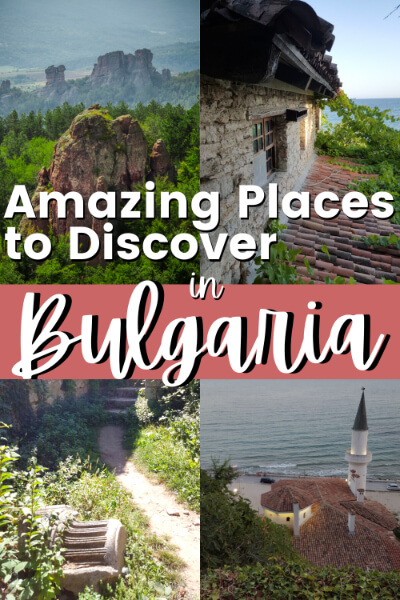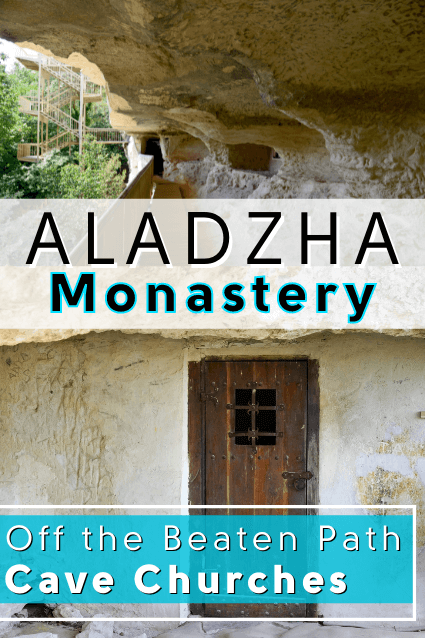Bulgaria has at least three different examples of rock-hewn churches, but Ivanovo is definitely the most famous.
Here is everything you need to know about how to visit, and whether it’s worth your time!

What Are the Rock-Hewn Churches of Ivanovo?
The Rock Hewn Churches of Ivanovo are a series of caves cut into a mountain near the village of Ivanovo, Bulgaria. Once home to monks in medieval times, this complex had up to 300 rooms at its peak.
Today there are about 20 rooms remaining.
Of those 20 rooms, there are five churches still preserved in the complex, with frescoes surviving on the walls and ceilings.
These churches have been designated a UNESCO World Heritage Site.

History of Ivanovo’s Rock-Hewn Churches
Early Use
This rock-hewn complex dates back to the 13th and 14th centuries. It is thought to have been founded around 1220. Beyond these dates, not much is known.
The frescoes in the churches are from the same lengthy time period, some were painted in the 13th century and some the late 14th century.
This makes sense since the caves were constantly being expanded until the monastery reached a size of about 300 rooms!
UNESCO says of the murals:
The frescos of the Ivanovo churches reveal an exceptional artistry and a remarkable artistic sensitivity for 14th century painting and Bulgarian medieval art
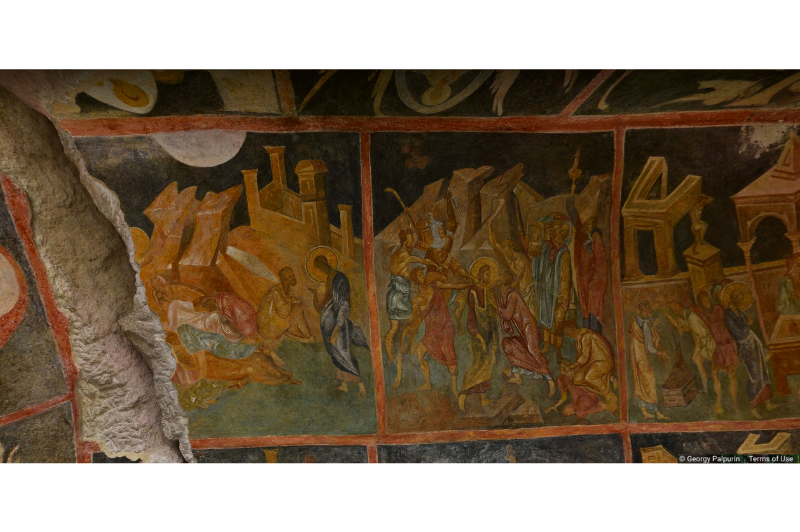
Decline of Ivanovo’s Rock-Hewn Churches
Some say that these caves were used up until the 18th century, but I wasn’t able to find any specifics – and you know I love a good fact!
214 km (132 miles) away, Aladzha Monastery is a similar site but on a much smaller scale.
At Aladzha, the caves were also abandoned at an unknown date, said to possibly be 18th century.
Because of the extensive damage to the complex at Ivanovo, and its reported instability, I was curious if an earthquake could be blamed for the abandoning of both (since it was said to be the same time period).
Unfortunately the list of earthquakes in Bulgaria doesn’t go back far enough, but there was one in neighbouring Romania in 1802 that caused widespread destruction in both Ruse and Varna – the nearest cities to Ivanovo and Aladzha, respectively – so it’s completely possible!

Loss and Modern Discovery
It isn’t clear if the Rock Hewn Churches of Ivanovo were ever truly lost to locals, but the outside world learned of them in 1914.
Famed Czech-Bulgarian archaeologist Karel Škorpil wrote about the churches in his book: “Description of the Antiquities along the Rusenski Lom River.”
[English translation – the book was written in Bulgarian]
The churches were named a UNESCO World Heritage Site in 1979, making it one of the project’s earliest additions.
The list was first published in 1978 with just 12 sites.
How Were the Rock-Hewn Churches of Ivanovo Made?
As with other cave monasteries around Bulgaria, the Ivanovo churches were first made in naturally forming caves in the hills.

Over time, the monks hollowed out more space using hand tools, and created larger rooms with smoother walls and ceilings.
Where Are the Rock Hewn Churches of Ivanovo?
This monastic complex is near the village of Ivanovo, in north central Bulgaria, near the Romanian border. The closest larger city is Ruse, about 22 km (14 miles) away.

The Rock-Hewn Churches themselves are in the hills above the Roussenski Lom River.
What is Open to the Public?
Unfortunately due to safety concerns and preservation efforts, only one church can actually be entered by the public.
It is one of the bigger ones, and has some amazing frescoes.
The church is entered via some stairs through a narrow gap in the rocks. This may not be the best activity for the claustrophobic.
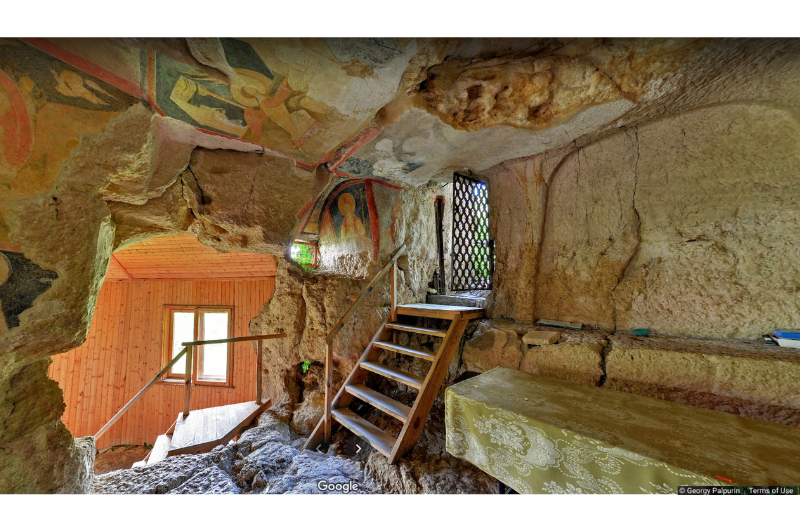
While the open chapel is one of the larger ones, it is still a fairly small room with low ceilings. Off to one side is a small balcony over the steep drop to the ground below.
How to Get to Ivanovo Rock Churches
Unfortunately, this is another time in Bulgaria when it’s best to rent a car.
In the spirit of slow travel, I would love to recommend a greener way to get there, but the country isn’t known for it’s public transit.
If you really don’t want to drive, you could potentially catch a cab in Ruse but getting back could be a challenge.
Some reviewers did mention seeing a tour bus at the site, so it’s possible you could arrange a tour from Ruse or the more famous Veliko Tarnovo.
There is nothing much in Ivanovo itself, just one place to stay from what I could tell.
With Ruse being a beautiful town and rental cars in Bulgaria being inexpensive, driving seems like the most efficient option.
There is a parking area on site.

Climbing up to the Rock Churches
With the many changes that have come from 2020, accessing the caves is now a one-way loop.
Originally a choice between a winding path or stairs to get to and from the churches, now the winding path takes you up and the stairs take you back down.
This is probably for the best, since there are approximately 100 stairs (about 8 flights) and this way you can take it easy, and admire the views on the path up, without delaying anyone.
The stairs are said to be quite slippery when wet, so avoid visiting on a rainy day.
Remember to bring good footwear for your visit.
Hours and Admission
Seasonal Schedule
You can visit this historical site from April through November.
From December through March it is closed to visitors as it can be quite cold and snowy/wet during this time.
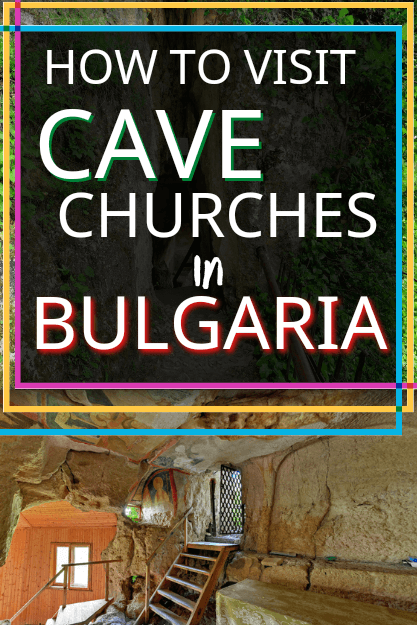
Best Time to Visit
The best days to visit are Tuesdays and Thursdays, although any day outside of the weekend is much quieter.
The Rock Hewn Churches of Ivanovo are open daily from 9 a.m to 6 p.m, and across the board the best time to visit is right at 9 a.m or between 1 p.m and 3 p.m.
Ticket Prices
Admission is 6 Lev (~3.50 USD) per person. I wasn’t able to find the price for children, but in Bulgaria it is common for kids to be free until age 6, sometimes until age 10.
Facilities
There are toilets on site at the bottom of the climb, but there is a small fee to use them.
As with all of Bulgaria, remember to bring cash because machines are not that common outside of major centres.
There is also a gift shop at the bottom, where you can purchase some handmade items.
Surprisingly, there is also a small cafe with the gift shop, serving a few basic items like shopska salad and meatballs.
A fun place to have lunch!
Nearby Cities and Sights
As I mentioned earlier, the city of Ruse is only about 25 minutes away by car.

It is a beautiful city unlike anywhere else in Bulgaria.
Situated on the Danube River, right across from Romania, Ruse is often called “Little Vienna” because of its unique architecture.
Veliko Tarnovo is about 1.5 hours away by car, and is one of Bulgaria’s more popular tourist destinations.
It is home to Tsaravets Fortress and colourful houses built into the hills above the river.

If ancient sites is what you’re after, check out the town of Plovdiv. One of Europe’s oldest cities.
Want More?
